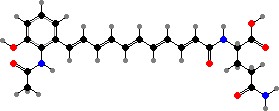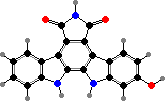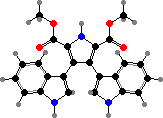
Fuligorubin A

Physarorubinic acid A

Physarochrome A
Introduction -
Common -
Bacteria -
Plantae -
Chromista -
Protozoa -
Fungi -
Animalia -
References
Amoebozoa
Protozoa are ancestral to the other eukaryotes, and as many former members are treated as chromists, there is little to set them apart. Nearly all of them are single cells without cell walls or alveoli, usually feeding by ingesting smaller organisms or absorption. Different sorts may move by means of flagella, pseudopodia, or occasionally both.
Except for a few flagellates, Amoebozoa generally take the form of plastic cells that move by means of internal streaming. Some can catch food by means of narrow projections, but in many they are missing and the cells generally deform around prey, variously flowing as a whole or through several broader pseudopodia.
Myxomycetes, the plasmodial slime molds, develop into large acellular plasmodia which move as a network through back-and-forth streaming. These are often several centimetres in size, with many nuclei, and in turn give rise to large sporangia resembling those of fungi. Haploid amoebae released from spores develop two flagella before ultimately fusing to form new plasmodia.



Many slime molds are prominently coloured. Several physarids have yellow plasmodia with tetramic acids, thought to have roles as photoreceptors or binding metal ions. Two common examples are Fuligo septica, with fuligorubin A, and Physarum polycephalum, where physarorubinic acids occur alongside different pigments like physarochrome A.





Bisindole alkaloids are widespread in fruiting bodies from light-spored groups, especially yellow arcyriaflavins; these inhibit protein phosphorylation in the growth of some bacteria and other cells. Red arcyriarubins give colour to Arcyria denudata and lycogarubins to Lycogala epidendrum. Some types also have quinone pigments like red trichione in Metatrichia.